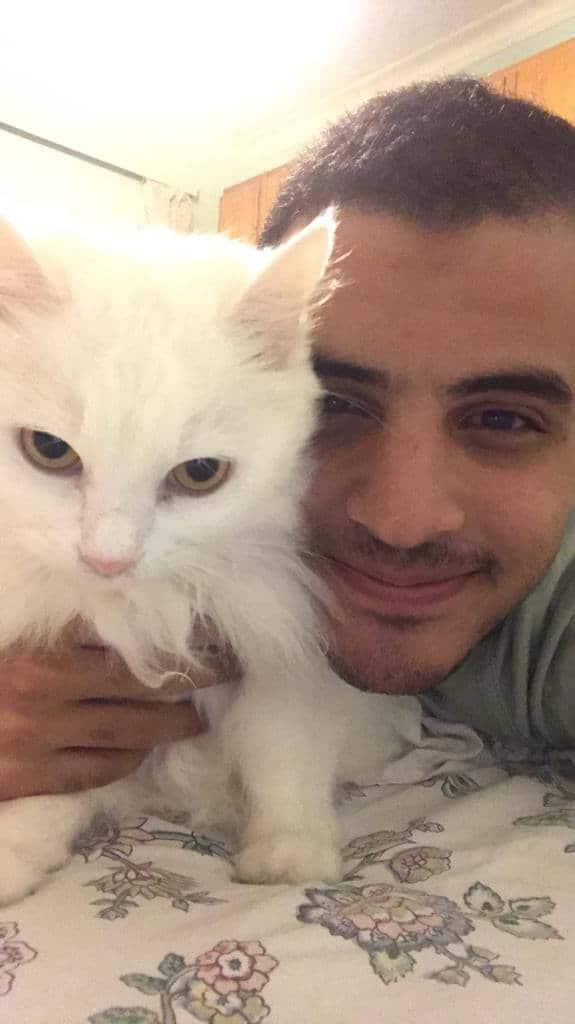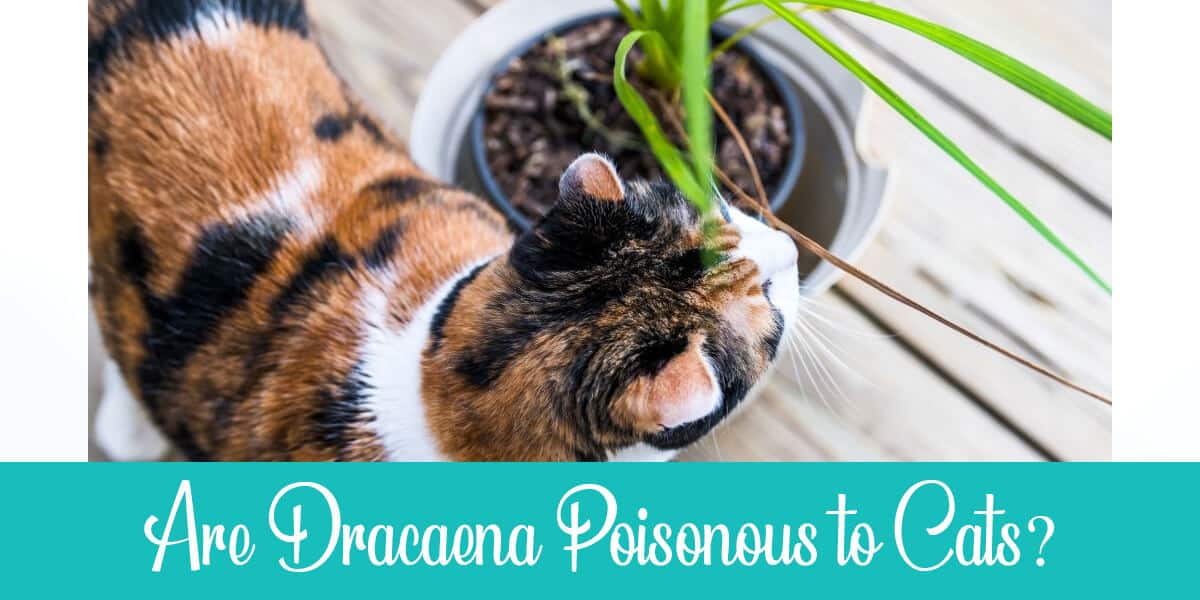The dracaena plant is among the most popular houseplants. In fact, people with avid interest in plants probably own one or several of the attractive Dracaena varieties.
If you own or plan on owning a Dracaena, you might wonder, “Are Dracaena poisonous to cats?” Unfortunately, like several houseplants, Dracaena plants aren’t feline-friendly.
While it’s not a highly toxic houseplant, the Dracaena plant can lead to some serious issues when ingested. Fortunately, though, the odds of recovery are incredibly high. Still, the last thing you’d want in your home is a plant that can put your cat in jeopardy.
In this article, we take a look at what makes Dracaena plants poisonous. We also offer some tips on what to do and what symptoms to look for if a cat nibbles on the plant. Perhaps there’s a way to have both your cat and Dracaena without putting anyone in danger, so stick around.
Table of Contents
Are Dracaena Poisonous to Cats?
Dracaena is poisonous to cats. This plant contains a group of chemical compounds called saponins. When ingested in small doses, dracaena can cause issues such as hypersalivation, vomiting, and diarrhea.
In large doses, these symptoms can lead to long-term symptoms, such as weight loss and depression. Fortunately, a visit to the vet can resolve the poisoning symptoms without permanent effects.
What Makes the Dracaena Poisonous to Cats?
The Dracaena family contains many beautiful variants that go by numerous names. What they all share in common is plant-derived organic chemicals known as Saponins. These chemicals can be found in the leaves, stems, and bark of the Dracaena.
Also known as triterpene glycosides, saponins vary in their degrees of toxicity. Different species in the Dracaena genus can have various combinations of the chemical compounds.
As a result, some Dracaena species can have little to no effect on cats. Others may lead to severe symptoms that require immediate veterinary care.
It’s worth mentioning that even if your Dracaena doesn’t contain any toxins, it could still irritate the cat’s digestive tract.
Because of their toxicity to pets, it’s safe to know the names the Dracaena plant goes by:
- Corn Plant
- Cornstalk Plant
- Dragon Tree
- Janet Craig Plant
- Ribbon Plant
- Striped Dracaena
- Striped Dragon Palm
- Warneckei Dracaena
- Warneckii
Related:
– Are Daffodil Flowers Poisonous to Cats?
– Is bougainvillea toxic to cats?
What to Do If Cat Ingested Dracaena?
Consuming Dracaena isn’t fatal to cats. The issue is with the symptoms that ensue after ingestion. If left untreated, the symptoms can take their toll on cats’ bodies. They may even lead to dehydration and other long-term effects.
For those reasons, if you happen to see your cat nibbling on the plant, it’s best to pay a visit to the vet. More importantly, if you’re not sure what your cat ate and she’s exhibiting poisoning symptoms, give her vet a list of all the houseplants you have.
This list ensures that the vet can exclude all possibilities. Then, the vet will be able to determine the exact issue with your cat and treat her accordingly.
Luckily, dracaena plants are quite bitter to taste because of the saponins. So, the chances of your cat consuming large quantities of the plant are slim—even less going back to it a second time. Still, it wouldn’t hurt to take precautions to avoid any mishaps altogether.
Symptoms of Dracaena Poisoning
Dracaena plants are only mildly to moderately toxic. That’s why the severity of the symptoms mainly depends on how much a cat ate of the plant.
In case your cat nibbles on a Dracaena plant, these are the symptoms to look out for:
- Hypersalivation
- Abdominal pain
- Vomiting
- Diarrhea
- Weakness or fatigue
- Incoordination
- Dilated pupils
If the cat has consumed big chunks of the Dracaena plant, symptoms could include:
- Erratic rapid heartbeat
- Weight loss
- Depression
Related:
– Are Gardenias poisonous to cats?
– Are lupins toxic to cats?
How to Treat the Effects of Dracaena Poisoning
Most often, the cat’s systems will flush out the plant on its own. This can take from 12 to 24 hours. Nevertheless, to avoid any exacerbations, take your cat to the vet as soon as you notice any symptoms.
The vet may seek medical treatment in case your cat consumed a huge chunk of Dracaena. Your cat will need to throw up to get rid of any plant materials. As a result, she’ll need to drink enough fluids to avoid dehydration.
This could also lead to severe dehydration. In this case, the vet should supplement your cat with electrolytes and IV fluids.
To Dispose or Not to Dispose of the Dracaena
There’s a reason why Dracaena plants are popular houseplants. They’re low maintenance and drought-tolerant. In addition, the Dracaena plants are known for their dense and shiny evergreen foliage as well as their thick woody stems.
The Dracaena plant’s attractive features may not sound worth the trouble for some people. In that case, there are many non-toxic houseplants that are similar looking or equally beautiful.
However, you might wonder if you can keep both Dracaena plants and cats around each other. It’s totally possible to keep a Dracaena in the same house as a cat. It just depends on the cats’ behavior and requires a bit of effort on your end.
If your cat has never given a second glance toward your houseplants, then you’ve got nothing to worry about. However, it should be noted that some cats enjoy nibbling on plants. If that’s the case with your cat, you may need to take certain measures.
How to Keep Cat Away From Dracaena
Start by making sure that the Dracaena plant isn’t placed in the rooms where your cat spends time. You can move it to a room that’s closed off to your cat, such as the bathroom. Dracaena plants thrive in humid, low light rooms—your bathroom should be an ideal place for it.
It should also be out of your cat’s reach just in case it goes inside the Dracaena’s room. You can place it on a high shelf. You should also throw away any fallen leaves and prune any hanging stems.
Another solution is to use a repellent spray that’s meant to keep pets away from plants. These sprays aren’t harmful to the plant nor the cat. It just deters the cat from coming close, which ensures that she doesn’t eat the Dracaena.
In Conclusion
As a cat owner, you want to keep your feline friend away from harm’s way. As a houseplant enthusiast, you want to have some of the most eye-catching and low-maintenance plants around.
While Dracaena plants are popular houseplants, they’re not cat-safe plants. You generally wouldn’t want your cat to play nor eat a Dracaena. Still, this doesn’t mean that you can’t have both exist peacefully at home.
Many cats aren’t the kind to play with plants. If your cat, however, shows interest in the Dracaena, then it’s best to keep it out of her reach. This way you ensure that your feline friend and Dracaena can coexist safely.

I’ve been living with cats since 2008 and I can confidently say I have more feline friends than humans lol. I currently live with 5 cats in different life stages; two of them are less than one year old, one is 2-ish years old and the oldest two are 9-ish years old. I’ve developed a strong bond with cats over the years and I’m eager to share my experience through this blog. You can learn more about my cats here.


